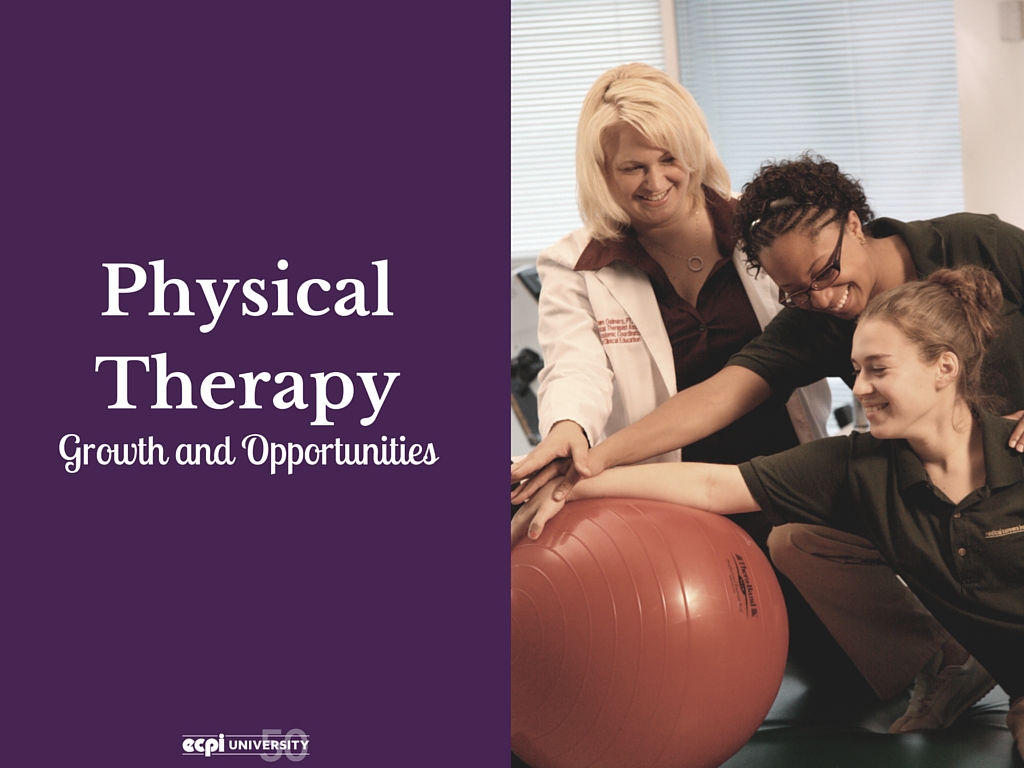
Physical Therapy Assistant Industry
Physical therapy assistants work with patients to help them regain their mobility and independence. If you're looking for a rewarding and hands-on field, look no further. Physical therapy assisting is a wonderful field in which you could do very meaningful work, changing the lives of your patients for the better.
The Baby Boomers
Those who once wore flowers in their hair and hippie beads around their necks as they rocked out at Woodstock are entering their senior years. The rocking they will be doing from here on will probably be in a chair on the porch. But this large demographic group is going to need a plethora of medical services all across the health care spectrum. That includes physical therapy.
Providing hands-on physical therapy as part of a comprehensive plan of care can help these former flower children retain their mobility and bounce back faster from injuries. This will allow them to remain active and enhance the quality of their lives.
Working Environments
Some people like the predictability of a 9 a.m. to 5 p.m. job with their weekends off. Others prefer the flexibility of rotating shifts. Still others hate the idea of being cooped up inside of an office all day and relish the idea of going out into the field to assist a changing roster of patients.
All of the above can be possible if you are working as a physical therapy assistant. Consider the following breakdown from 2014 from the Bureau of Labor Statistics about the variety of environments where PTAs can ply their trade.
Percentage of physical therapy assistants working in different environments:
- Single or multi-practice offices of audiologists, physical, speech, and occupational therapists - 43%
- Local, state, and private hospitals - 23%
- Nursing homes and long-term care facilities - 11%
- Home health care services - 9%
- Doctor's offices - 5%
Room to Grow
Some people seem to come out of the womb knowing exactly path they will take, but for most, it's more of a "long and winding road." Getting an associate degree as a physical therapy assistant could be a smart move. Those who enjoy working in that field but want to play a larger role in their patients' treatment might consider returning to school for an advanced degree and licensure as a physical therapist.
Doing this in two steps is a good idea. By becoming a PTA first, you could have a better understanding of all that is required to work in that field. You can discover whether or not your particular skill set and aptitudes are a good match, without investing the time and money into an advanced degree program in a field in which you may or may not enjoy working.
Expand your horizons as a physical therapy assistant
If you're interested become a part of this expanding field, perhaps a degree in physical therapy assisting is right for you. At ECPI University we offer an Associate of Applied Science Degree in Physical Therapist Assisting that could give you all of the training and experience you need in order to enter this exciting and rewarding field. With year-round classes and accelerated course work, you have the opportunity to earn your degree in as little as 18 months. Contact ECPI University for more information.
It could be the Best Decision You Ever Make!
DISCLAIMER – ECPI University makes no claim, warranty, or guarantee as to actual employability or earning potential to current, past or future students or graduates of any educational program we offer. The ECPI University website is published for informational purposes only. Every effort is made to ensure the accuracy of information contained on the ECPI.edu domain; however, no warranty of accuracy is made. No contractual rights, either expressed or implied, are created by its content.
For more information about ECPI University or any of our programs click here: http://www.ecpi.edu/ or http://ow.ly/Ca1ya.


